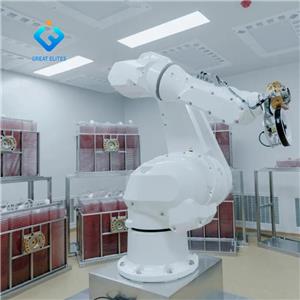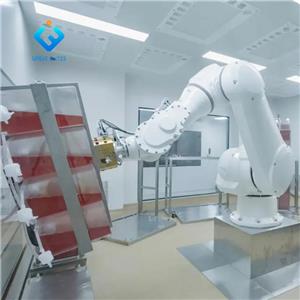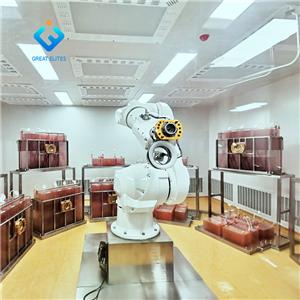The development of biomedicine
The development of biomedicine.
What is biopharmaceutical?
Biopharmaceutical is the use of biotechnology to produce natural active substances in living organisms. Its effective ingredients are usually some bioactive proteins, DNA, viruses, cells or tissues, etc. the administration method is direct tissue injection. The preparation of drugs is very dependent on the direct culture of biological tissues / cells and usually cannot be accurately replicated.
These characteristics are obviously different from chemical pharmacy. Chemical pharmacy is a kind of synthetic drugs, which can be administered in a wide range of ways, including oral, inhalation and injection, and the preparation is more flexible.
The therapeutic principle of biological drugs is mainly to stimulate the immune system of the body to produce immune substances to exert its effects, and generate humoral immunity, cellular immunity or cell-mediated immunity in the human body, so as to achieve the therapeutic effect. It can be used to treat tumors, AIDS, cardiovascular and cerebrovascular diseases, hepatitis, autoimmune diseases, metabolic related diseases, etc.
Development history of biopharmaceutical industry
The development of biopharmaceutical industry is closely related to the innovation of biotechnology. Since the 20th century, with the gradual deepening of people's understanding of genetics, life evolution and biology, and the continuous breakthrough of biotechnology, the biopharmaceutical industry is also developing rapidly.
As early as 1868, people had discovered two kinds of nucleic acids - DNA and RNA. But at that time, people were more inclined to think that protein was genetic material.
Until 1953, the British journal Nature published the article "molecular structure of nucleic acid - structure of DNA" by Watson and Crick. The discovery of DNA double helix structure makes people realize that it is the difference of DNA and gene operation that leads to the difference of biological evolution and life process.
In 1958, Crick proposed the principle of molecular center, indicating that the flow direction of genetic information is from DNA to RNA, and then from RNA to protein.
After that, the research of molecular biology entered the fast lane. In the following ten years, scientists discovered DNA polymerase, DNA ligase and restriction endonuclease.
Restriction endonuclease is like a pair of DNA scissors, which can cut the target DNA from a long length of DNA. And ligase is like glue, which can stick fragments of target gene and plasmid gene together. These findings laid a foundation for gene recombination technology.
(1) 1970s: the sprout of biotechnology drug research
In 1973, two scientists Cohen and Boyle successfully integrated the plasmid containing Xenopus gene into E. coli, completing the first DNA cutting and ligation, and the gene recombination technology was born.
Later, Robert Swanson, a partner of KPCB fund in Silicon Valley, took a fancy to their research. After some exchanges, Swanson and Boyle jointly founded a biotechnology company - Genentech.
After the establishment of the company, Swanson, a venture capitalist, believed that insulin was a good product, because since the listing of bovine insulin in 1923, it has brought considerable profits to Lilly. If the recombinant DNA technology can be used to produce a large amount of insulin, the cost will be lower and the profit will be higher.
In 1978, Genentech synthesized recombinant human insulin.
In addition to gene recombination technology, another great technology was also born in the 1970s.
In 1975, Kohler and Milstein discovered the hybridoma technology. By using hybridoma cells, monoclonal antibodies can be produced in large quantities, thus opening the prelude of antibody engineering.
As early as the 1950s, there were animal cell culture technologies in the world. Animal cells can be cultured and expanded in vitro to produce biological products. However, before the advent of genetic engineering technology, the level of protein expressed by cells was very low. Therefore, early animal cell technology can only be used to produce vaccines and a small amount of interferon and urokinase.
The emergence of genetic engineering technology and hybridoma technology not only enables the realization and application of large-scale animal cell culture technology, but also becomes the two wheels to promote the development of biopharmaceutical.
(2) 1980s-1990s: rapid development of biopharmaceutical
In the 1980s, the development of global biopharmaceutical started an accelerated mode.
After Genentech synthesized recombinant human insulin, Lilly soon came to the door to reach cooperation. In 1982, the world's first gene recombinant human insulin was officially launched, which was the first gene recombinant biological product approved by FDA.
In 1986, the biopharmaceutical industry flourished. First, humanized antibody technology was established, which overcame many defects of mouse antibody used in human treatment.
In addition, many important drugs were also listed in this year. The first therapeutic monoclonal antibody drug was marketed to prevent renal transplant rejection;
In the same year, the first anti-tumor biotechnology drug α- Interferon was listed and used to treat leukemia, which really realized the mass production of interferon;
The first gene recombinant vaccine - hepatitis B vaccine was also launched in this year, which is the first vaccine product based on the recombination of viral protein gene sequence.
In the 1990s, the first monoclonal antibody for tumor treatment - rituximab (merrochin) was listed in 1997, and the development of monoclonal antibody drugs entered another new stage.
In the following two years, the US FDA approved seven monoclonal antibodies and one TNF- α Receptor inhibitory protein, the global biopharmaceutical industry ushered in rapid development.
(3) 21st century: a prosperous era of biopharmaceutical
On June 26, 2000, scientists from the United States, Japan, Britain, France, Germany and China, who participated in the human genome project, released the working draft of the human genome to the world, deciphered 97% of the genetic code of the human body, and completed the base pair sequencing of 85% of the genes, laying a foundation for the final completion of all sequencing work. Since then, biopharmaceutical has ushered in a prosperous era.
During the 10 years from 2001 to 2010, FDA approved 20 mAb drugs. Among the top 10 drugs in global sales in 2010, 5 were mAb drugs. In 2010, the global sales of mAb drugs reached US $44 billion, with a rapid development momentum.
At present, biopharmaceutical has become the most important part of the medical field, and has begun to replace chemical drugs as the mainstream medicine in some disease fields.
In 2020, the global pharmaceutical market scale was about US $13841, of which biopharmaceuticals was about US $313.1 billion, accounting for about 20%.
The global biopharmaceutical market is growing rapidly, with a growth rate about twice that of the overall pharmaceutical market, far exceeding that of the chemical and traditional Chinese medicine markets. Among them, monoclonal antibody is the most mature and commercialized biopharmaceutical. In 2020, the global monoclonal antibody market scale will reach 181.9 billion US dollars, and the scale of China's monoclonal antibody will be about 44.8 billion yuan.
China's biomedical market is still in the early stage of development, and the industry growth is also very strong. From 2016 to 2020, China's biopharmaceutical market scale increased from 183.6 billion to 387 billion.
From 2014 to 2019, the compound growth rate of China's biopharmaceutical market reached 22.4%, far exceeding the compound growth rate of 8% of the global biopharmaceutical market in the same period.
Looking back on the whole development process of biopharmaceutical, the United States has always been the leader in the development of global biopharmaceutical. Several important waves of biotechnology revolution originated in the United States. With its absolute advantage in the global pharmaceutical market, the United States accounted for half of the global market share as early as 2014.
In addition, in 2018, among the top 10 drugs in global sales, 9 biopharmaceuticals accounted for nearly 90% of sales.




